Psychologists say that the color green brings peace and tranquility to a person. And it’s hard to disagree with this, because green is the most natural tone. The palette of this color is varied and very deep, so it is able to convey all the colors of nature. Any interior can be in green tones: bathroom or bedroom, work area, etc. It is worth admitting that the kitchen is not an ideal place for plants in principle. The presence of high temperatures, including temperature changes, steam, splashes of fat and water become an aggressive environment for any greenery. But what if the soul requires a piece of nature in a room where the owner spends a lot of time?
Of course, decorate the kitchen area with potted greens! In modern cities there is a huge selection of flowers and decorative foliage plants, whimsical and not so fancy. This choice makes it possible to “settle” a green friend in your kitchen easily and simply. Works great flower delivery in Moscow and other large and small cities. Moreover, they deliver not only traditional bouquets, but also “flowers in pots”. These are the ones that are most interesting to us.
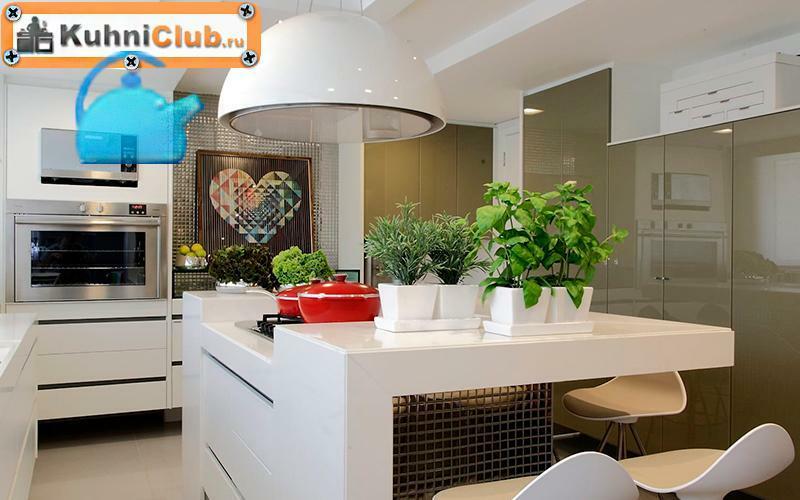
Content
- Recommendations for choosing plants for the kitchen
- What place in the kitchen is not suitable for plants?
- Favorable places in the kitchen for installing plants
- What kitchen styles are plants suitable for?
- What indoor flowers and plants are suitable for the kitchen?
- What flowers can be grown in the kitchen? Video
Recommendations for choosing plants for the kitchen
Choosing the right plant to stand in the kitchen is a very important step, depending on many factors. Let's list the most important ones:
- If the kitchen is located on the south side and is constantly flooded with sunlight, choose light-loving plant species. For other cardinal directions, it is better to choose shade-loving greens.
- We recommend choosing plants with minimal care. For example, they are unpretentious in watering or have smooth foliage that is easy to wipe with a damp cloth.
- The area of the kitchen will tell you how large the purchased greens can be. Whether it will be a flowerpot with hanging leaves or a huge pot with a tree - the moment is individual.
- Spiny plants are not a good choice for an oversized kitchen. However, there are places where “thorns” will be safe: for example, on a shelf.
- To prevent the kitchen from becoming too dark, do not place many pots with tall plants on the windowsill.
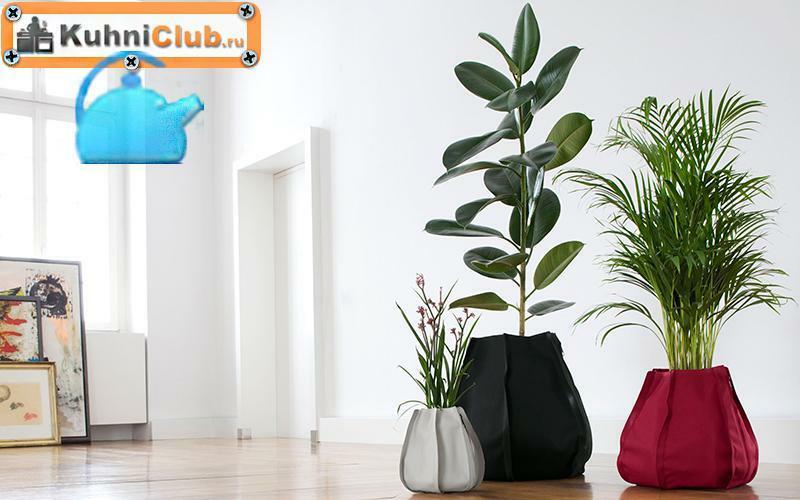
What place in the kitchen is not suitable for plants?
Before purchasing a plant for the kitchen, you should find a place to install it. The following does not apply:
- Sink area - This area is full of water and detergents.
- Place near the gas stove - high temperatures, steam, and splashes of fat prevail here.
- A place with a draft - perhaps there is no plant that likes to constantly “moth around”.
- Places close to heating devices - also, most greenery does not like excessive heat, which evaporates moisture from them.
- A place without sunlight - although there are plants that are not afraid of partial shade and even shade.
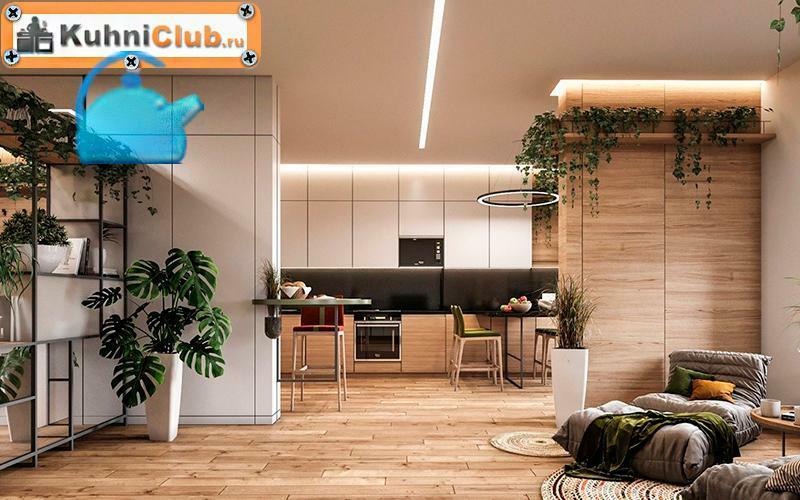
Favorable places in the kitchen for installing plants
Earlier we talked about places in the kitchen that are not desirable for installing greenery. We list the most popular points in the room where the plant will feel comfortable and delight the owner with its beauty.
-
Windowsill. Perhaps this is the most common option for the “place of residence” of flowers in pots. Here there is maximum sun and distance from such “hazards” as the stove and sinks. The most common flowers for windowsills are violets, geraniums, begonias, and orchids. You can place pots with bulbous flowers such as tulips and crocuses. Also, low-maintenance succulent plants or edible herbs thrive on the windowsill.
On the windowsill you can place a flowerpot, for example, with several varieties, which will be unusual and unique. - Wall. Here we will not talk about shelves, but about vertical gardening. This is a trending and challenging topic that professional landscapers can help with. You can create a green wall yourself, but there are some nuances. The result will exceed all expectations: either a small green plant panel or scattered individual green accents will appear in the kitchen. With additional lighting, the green painting will acquire magic and a floating effect. We'll talk more about phytopan below.
-
Rack. A popular theme in kitchen design is creating a wall for... kitchen zoning. Most often this is needed in kitchens-living rooms or studio apartments. Completely different plants can be placed on such an artificial wall: vines, cacti, ficus, myrtle tree, bonsai, etc.
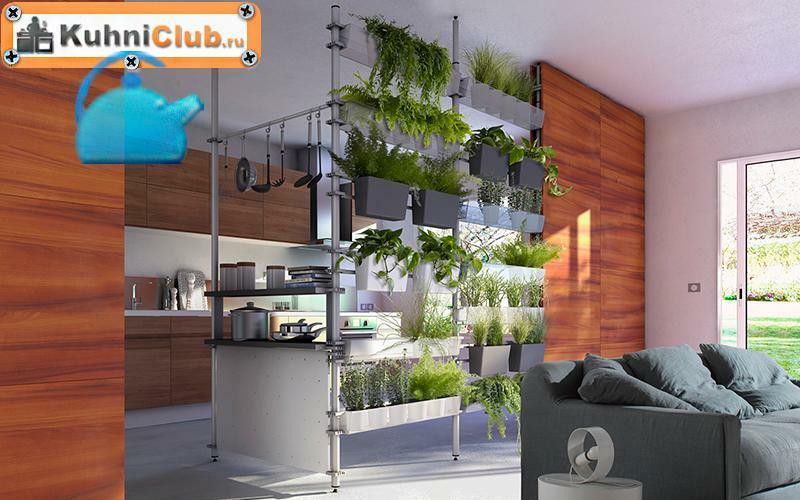
Greens on a rack in the kitchen-living room - Floor. It seems that the floor was created so that a powerful pot with a living tree could stand on it. Especially if the kitchen has a non-standard layout, for example, a niche, bay window, trapezoidal perimeter, etc. If allowed dimensions of the kitchen, you can put lemon, tangerine, pomegranate, salon palm, Guiana chestnut, etc. (see photos of plants below).
- Dinner table. A plant in a pot or vase is unlikely to be suitable for a small table; there is simply no room for it, but for a massive one it’s great! In this case, we are not talking about a vase, for example, with wildflowers, but about a pot or even a small composition.
-
Window. A curtain of plants will slightly block out the sunlight, so this option is not suitable for everyone. It is not necessary to have descending plants here. These can be small “caps” of greenery with flowers. Composition is also possible.
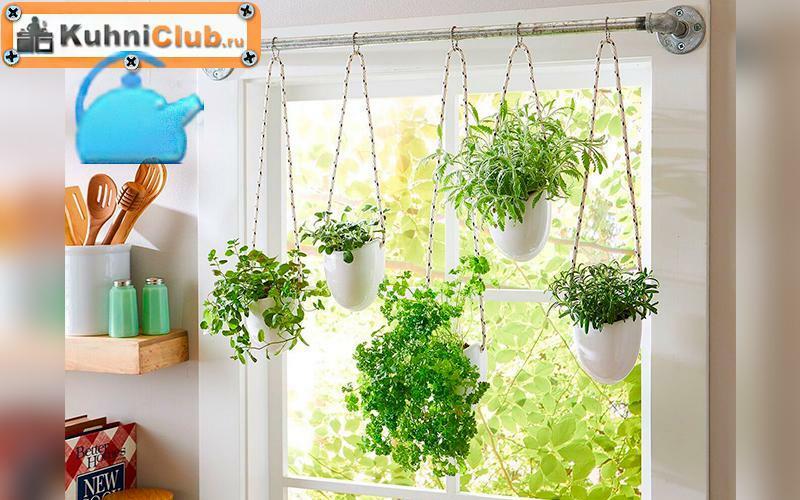
Decorating the kitchen window with greenery - Working surface. Despite the distance from the window and, therefore, sunlight, pots with small plants standing on the work surface will add personality and comfort to the kitchen. Large and spreading greenery is not suitable - choose neat decorative foliage plants, succulents, etc.
- Fridge. This place is not so popular for placing indoor plants. But if you choose it, then for beautifully flowing plants, for example, vines, ivy.
-
Ceiling. No matter how strange it may sound, plant pots hanging from the ceiling add some magic and unusualness to the kitchen. It is important not to overdo it here: a small plant will look ridiculous, and too lush vegetation will be inappropriate, weighing down the kitchen, especially a small one.

Plants from the ceiling
What kitchen styles are plants suitable for?
Kitchen styles a huge variety, and each of them has its own characteristics. However, designers claim that there is a place for a green resident in any kitchen. The main thing is not to overdo it. The variety of greenery allows you to “play” with the design of the kitchen: a plant with large or small flowers, with rich greenery or long thin leaves, monochromatic or variegated.

Let's move on to specifics. Greenery can be a bright accent in a monochromatic kitchen, for example, classical or Scandinavian style. A plant with large foliage or large, rare flowers would be appropriate here.
Eco style, it seems, was created so that plants could live in such a kitchen, and in considerable quantities. Country style is in no way inferior to eco - a rustic interior cannot be separated from nature, so filling such kitchens with greenery is recommended by designers. Wood, stone, glass, cork, clay, linen are the main materials of the listed styles and a constant trend in recent years.
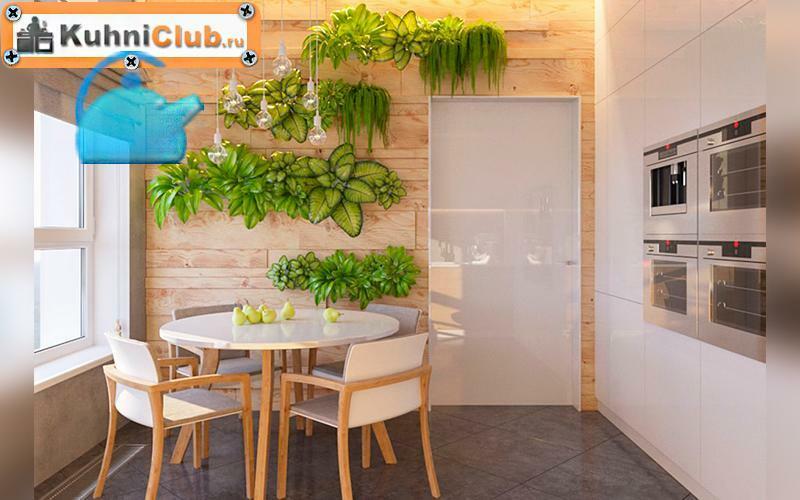
IN loft style kitchen A phytopan or phyto-picture would be perfect. Vertical gardening is a trend that designers are quickly picking up. Cultivation of greenery occurs through the installation of various structures located vertically on the kitchen wall. Most often, live stabilized moss is used - a natural material that has undergone special treatment, where instead of natural moisture a glycerin-based solution is used, which is environmentally friendly and safe.
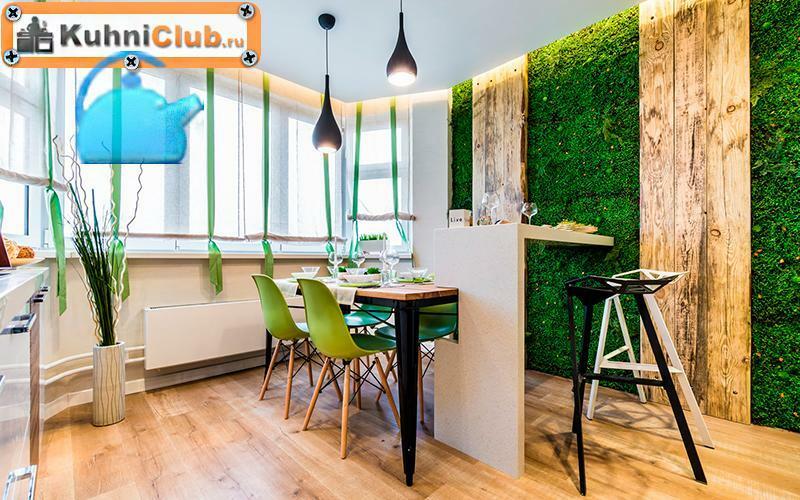
Combine different materials to highlight a particular kitchen style. The trend is for materials such as glass, metal, clay, concrete, which combine perfectly with each other. At the same time, concrete has become one of the most popular materials used by designers, including in the kitchen. You can combine not only the material, but also the shape of the pots and the plant itself.
What indoor flowers and plants are suitable for the kitchen?
There are a huge number of plants in stores that are suitable for “living” in the kitchen. Most popular plants are:
- Varieties of violets. Pleasant to the touch velvet leaves, a variety of colors, minimum maintenance, neat “caps” and flowering all year round - for many years housewives have given preference to this plant.
- Varieties of geranium. It can be called “grandmother’s flower,” because many people remember how in their grandmother’s house there was a geranium on the windowsill and it smelled disgusting as soon as it touched the flower. However, it is geranium that perfectly cleans the air, which is necessary in the kitchen, especially if there is gas stove. The content of a large amount of essential oils in geranium destroys harmful microorganisms and has a calming effect on humans.
- Orchid. Not easy to maintain, but if everything goes well at the beginning, its flowering will be year-round and pleasing to the eye. Warmth and humidity, which are abundant in the kitchen, are the perfect environment for such capricious flowers.
- Cactus. These prickly plants are so varied in shape and size that they can fit into any style of kitchen. It is known that cactus has beneficial properties for humans: air ionization and protection from electromagnetic radiation.
Let's move on to decorative foliage plants:
-
Chlorophytum. We continue to purify and even humidify the air. Chlorophytum is a fairly popular plant for the kitchen, unpretentious and ready to please its owners even when standing in the shade. Research shows that per day, 1 chlorophytum kills up to 80% of the microbes around it, cleaning approximately 2 sq.m. room area. Combine them with each other and breathe disinfected air.
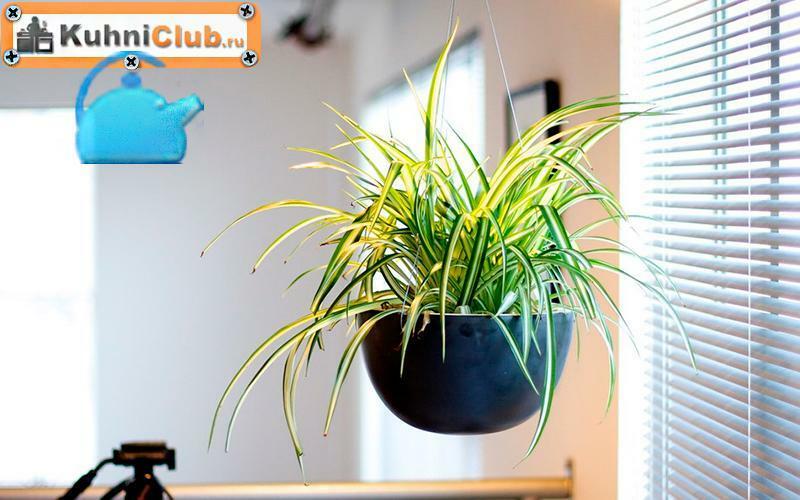
Chlorophytum -
Crassula (or money tree, jade plant, etc.). Its leaves are similar in shape to jade, a stone considered by our ancestors as a talisman for success and longevity. But it is not only because of superstition that one can acquire a crassula, because the plant is beautiful in itself. Although it is believed that the Crassula blooms once a year, in fact the break in flowering can be very long, lasting several years.
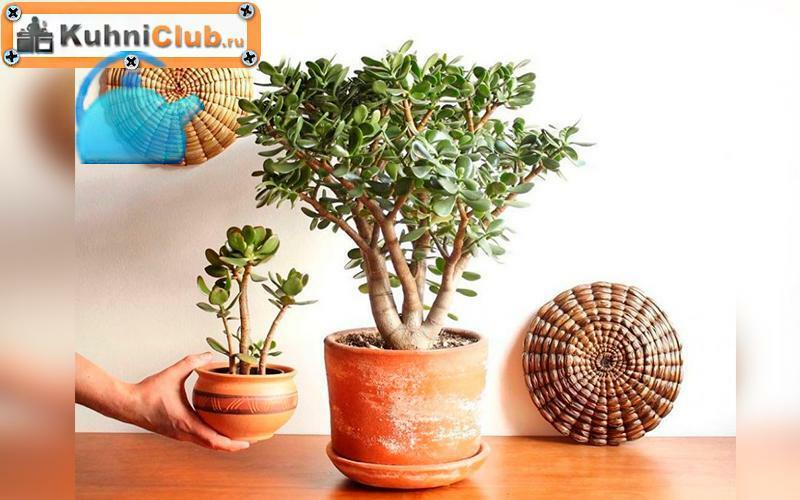
Crassula (money tree) -
Philodendron. It cleans the air very well and is completely unpretentious. Rare spraying and watering, as well as wiping the leaves with a damp cloth is all that the philodendron will be happy with.
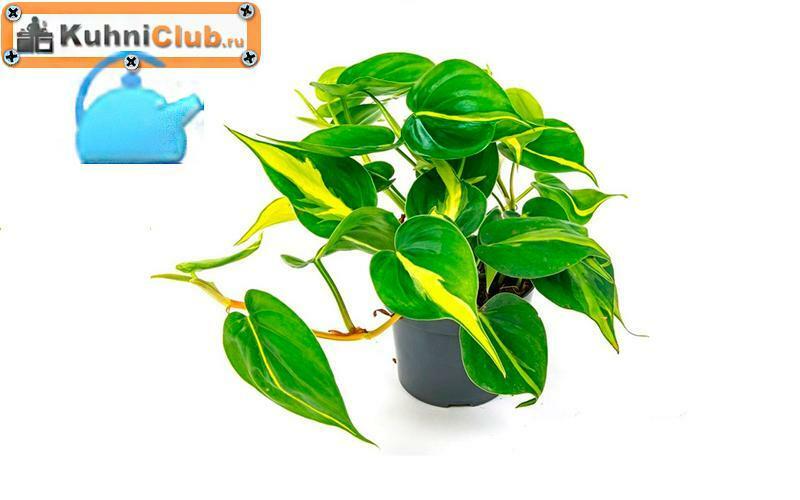
Philodendron brazil
The kitchen is a place not only for indoor flowers and small plants, but also for home trees. Of course, we are talking about large areas, kitchens, living rooms, etc. Here are examples of some popular examples:
-
Nolina (Bottle Tree). Do you want something unusual? Then you need a Bottle Tree! It is better to protect it from drafts, but it is not scary to forget to water - after all, its thick trunk retains moisture for a long time.
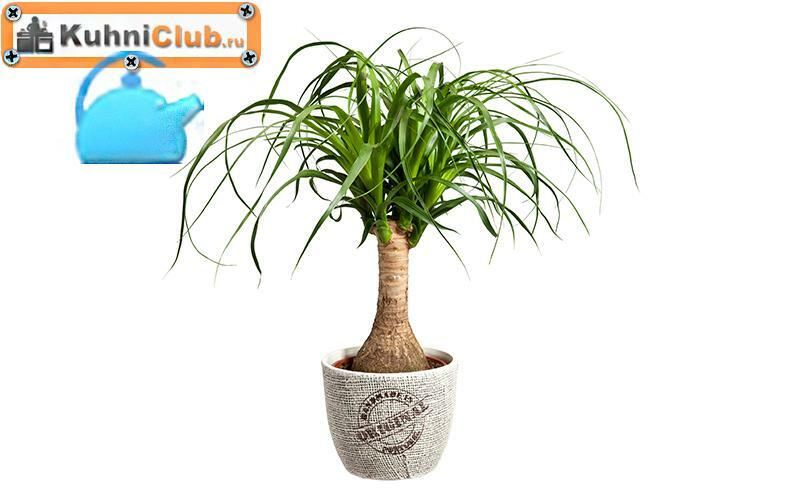
Nolina (Bottle Tree) -
Fig tree (fig). Its huge leaves will make it a standout feature in any kitchen. At a young age, a fig tree has a denser “cap” of leaves, which gradually “spread” over the entire trunk over the years.

Fig tree (fig) -
Schefflera (Umbrella tree). Its height can reach 2.5 meters. The main condition for growth: sufficient sunlight. Place it in the kitchen on the south side.
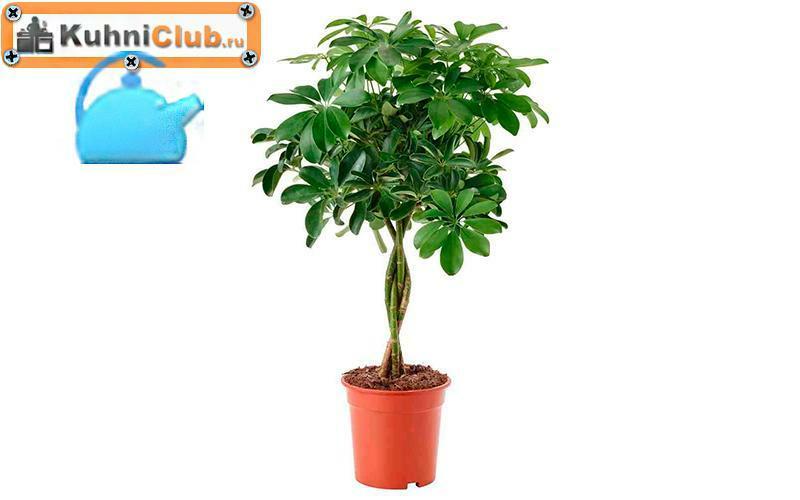
Schefflera (Umbrella tree) -
Citrus trees (lemon, orange, lime, tangerine). Perhaps everyone associates these trees with summer and the sea. With good care, they can bear fruit all year round. Tree owners claim that citrus notes are constantly heard in the room. And a lemon grown with your own hands is simply a treasure!
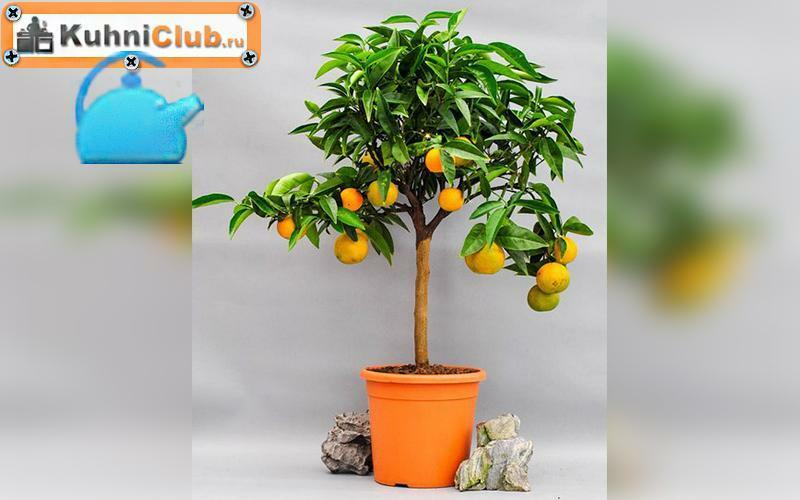
Citrus tree (mandarin) -
Guiana chestnut (Pachira). If you are looking for beauty, originality and exoticism, this plant ticks all the boxes. By constantly wiping the foliage with a damp cloth, the tree will delight with its shine. Despite the fact that in nature Guiana chestnut has a short stature, at home it can reach 2 meters.
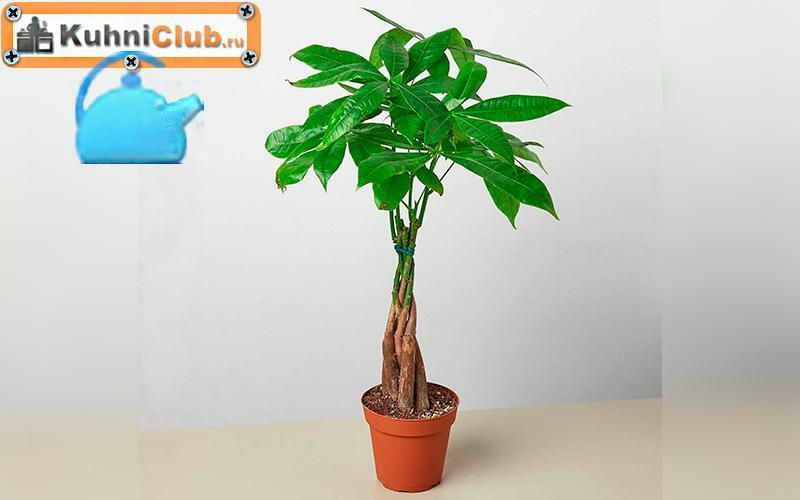
Guiana chestnut (pachyra) -
Salon palm. It has been a popular type of kitchen plant in recent years. The salon palm is suitable for any kitchen style from classic to minimalism. Unpretentious in care, this plant will delight with its beauty even in a dimly lit place with infrequent watering.
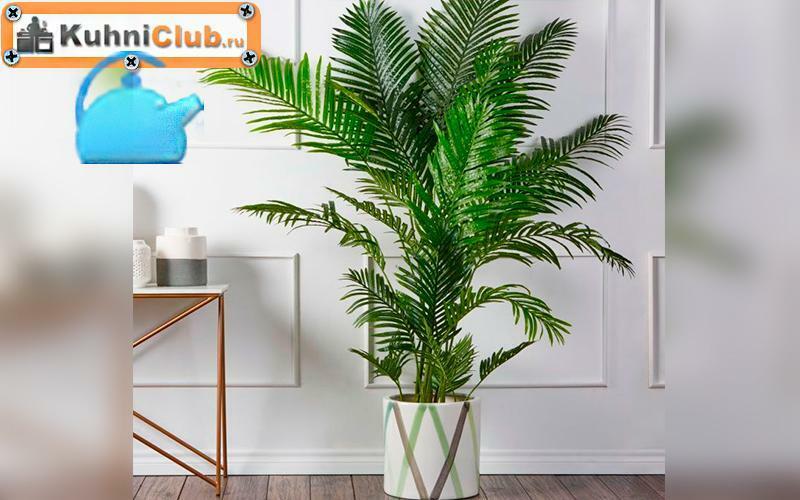
Salon palm
Still trending edible plants. We are talking about such greens as basil, onions, parsley, mint, rosemary, thyme and other fragrant, spicy herbs. In a larger kitchen you can place, for example, decorative peppers.
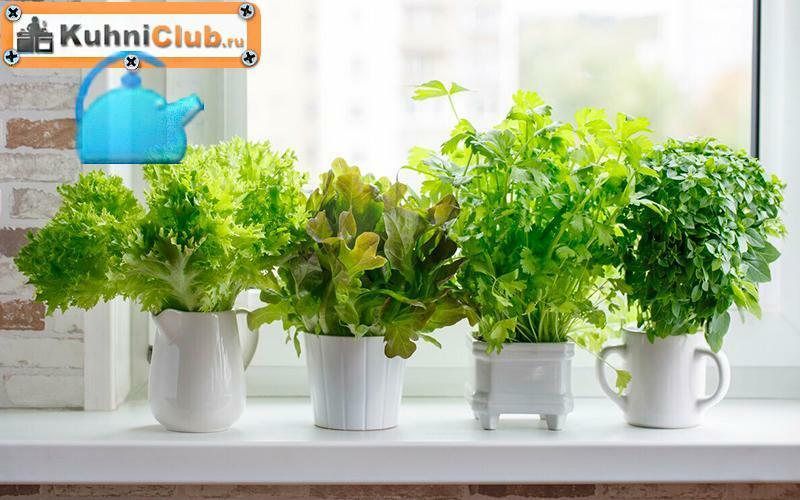
We don't always manage to go into nature. That's why we try to have a piece of it at home. A green island or even a small corner can have several functions: provide aesthetics or psychological relaxation, and also help out with the necessary zoning of the kitchen.


